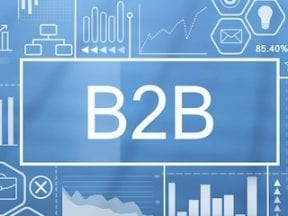Covid-19 forced all of us to change. Companies and employees who had resisted digital innovation suddenly had no choice. Some of the changes have created value and are worth keeping. Others not so much.
My company develops ecommerce systems for B2B merchants. What follows are pandemic-induced changes that, in my view, will likely become permanent. I’ve also listed a few painful B2B weaknesses that Covid has exposed.
Permanent Changes
Digital content is critical. This was shifting even before the pandemic. People are using online content rather than an in-person conversation. Even phone and virtual interactions are down in favor of digital self-service options. Companies in 2020 came up with new ways to build relationships, such as videos, articles, PDF guides, and other resources. Going forward, think about how a customer or prospect can interact with your company at midnight when no one is around.
More efficient processes. Doing more with less has become a higher priority. Tools that make key processes faster are essential, such as quickly answering customers’ questions, closing a sale, setting up an account, cost details, and shipping and arrival info.
Embracing online sales. For many of my B2B clients, ecommerce sales grew in 2020, even if off-line revenue was down. The pandemic demonstrated the value of digital transactions to organizations that were previously skeptical. Ecommerce is a benefit to a sales team, and last year proved it.
Ecommerce on a timeline. Many B2B ecommerce sites that had been held up due to an expansive scope got done quickly. Companies were forced to accept smaller, faster iterations and improvements.
New ways of communicating. In-person sales calls and trade shows turned out to not be as important as we thought. Our culture shifted as more people worked from home. We became used to seeing each other’s pets and being in each other’s homes. We were forced to re-examine our habits and notions of how things are.
New services or processes. An HVAC distributor, for example, can now offer dock-side pickup, similar to curb-side for retailers. Traditional B2B sellers have shifted to selling certain products directly to consumers. Manufacturers that once took complex orders only through a salesperson have created self-service digital ordering.
New skills. Many B2B companies shifted employees to digital-focused tasks. Experienced team members can offer valuable perspectives. Most are willing to learn new things to match the needs of the company.
Weaknesses
Challenging times can highlight our weaknesses. The pandemic did that for quite a few B2B merchants.
Outdated systems. In shifting to digital, some organizations found that their systems could not easily integrate. Examples are outdated administrative platforms or homegrown software for sales quotes. The digital transition requires a hard look at internal systems. Some will need to be updated.
Lost opportunity. Businesses with limited digital platforms suffered the most.
Culture turmoil. Many teams struggled because they weren’t prepared for or open to essential changes. Companies have learned the importance of a resilient, innovative, and adaptable culture. Employees who demonstrate an unwillingness to change are obstacles. Those who step up and lead are invaluable.
Unnecessary expenses. Some companies realized they were paying for outdated items that did not create value for the business or its customers.
2020 in Hindsight
Take the time to review how 2020 impacted your company. What lessons did you learn? What choices might you make going forward?




